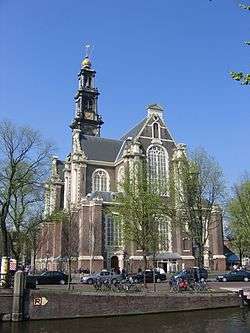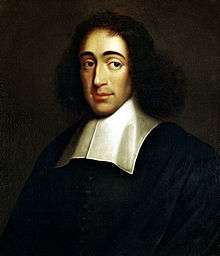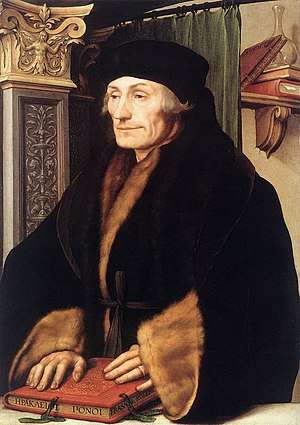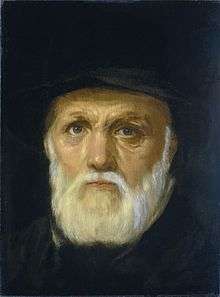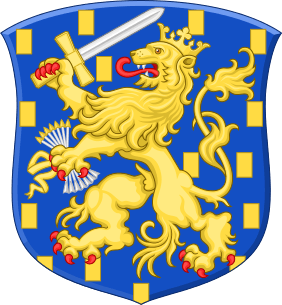Religion in the Netherlands
Religion in the Netherlands was predominantly Christianity between the 10th and until the late 20th century; in the late 19th century roughly 60% of the population was still Calvinist and 35% was Catholic. Since then there has been a significant decline of Christianity—both Catholic but especially Protestant—so that nowadays Catholics outnumber Protestants and there is a secular majority, while also including a relatively common Muslim minority.
| Life in the Netherlands |
|---|
 |
|
Society
|
|
Government |
In 2015, Statistics Netherlands, the Dutch government institute that gathers statistical information about the Netherlands, found that 50.1% of the adult population declared to be not religious. Christians comprised 43.8% of the total population and were divided between Catholics with 23.7% and the members of the Protestant Church of the Netherlands with 15.5%, members of other Christian denominations were the 4.6%. Islam comprised 4.9% of the total population, Hinduism 0.6%, Buddhism 0.4% and Judaism 0.1%.[1]
A large majority of the Dutch population believes that religion should not have a determining role to play in politics and education. Religion is also decreasingly seen as a social binder,[4] and is generally considered a personal matter which should not be propagated in public.[5]
The Dutch constitution guarantees freedom of education, which means that all schools that adhere to general quality criteria receive the same government funding. This includes schools based on religious principles by religious groups (especially Roman Catholic and various Protestant). Three out of thirteen political parties in the Dutch parliament (CDA, ChristianUnion, and SGP) are based upon the Christian belief. Several Christian religious holidays are national holidays (Christmas, Easter, Pentecost and the Ascension of Jesus).[6]
Atheism, agnosticism and Christian atheism are on the rise and are widely accepted and considered to be non-controversial. Even among those who adhere to Christianity there are high percentages of atheists, agnostics and ietsists, since affiliation with a Christian denomination is also used in a way of cultural identification in the different parts of the Netherlands.[7]
In 2015, a vast majority of the inhabitants of the Netherlands (82%) said they had never or almost never visited a church, and 59% stated that they had never been to a church of any kind. Of all the people questioned, 24% saw themselves as atheist, an increase of 11% compared to the previous study done in 2006.[8] The expected rise of spirituality (ietsism) is rising according to research in 2015.
In 2019 the Central Bureau of Statistics reported that for the first time, non-religious people were in the majority in The Netherlands. Only 49% of people older than 15 years reported to be religious; in 2012 that was still 54%. The largest denomination was still Catholicism (24%), while 5% identified with Islam.[9]
History

The oldest data on the profession of religion by the inhabitants of the regions that are now the "Netherlands" are passed down by the Romans. Contrary to what ancient sources seem to suggest, the Rhine, which clearly formed the boundary of the Roman Empire, did certainly not form the boundary between residential areas of Celts and Germans. There were Germans south of it (Germani Cisrhenani) and many place names and archaeological finds indicate the presence of Celts north of the Rhine. Between these "Celtic - Germanic peoples" and later the Roman conquerors (romanization) a cultural exchange took place. An adaptation of polytheistic religions and each other's myths took place among the various tribes, coming from both the Germanic, Celtic and later Roman mythology. Gods as Nehalennia, Hludana and Sandraudiga are of indigenous (Celtic) origin, the Germanic people had gods like Wodan, Donar and Frigg/Freija (see Freya) from Germanic origin. For example, Jupiter, Minerva and Venus have been introduced by the Romans. Tacitus also described the creation myth of Mannus, a primitive man from which all Germanic tribes would have emerged. The Celts and Germans in the Low Countries were also most likely to have had tree shrines, following the example of the Old Norse Yggdrasil and the Saxon Irminsul and Donar's oak. Temples were probably only built during and after the romanization, and have been preserved for example in Empel and Elst.
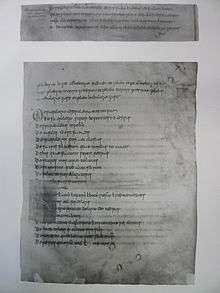
From the 4th to the 6th century AD The Great Migration took place, in which the small Celtic-Germanic-Roman tribes in the Low Countries were gradually supplanted by three major Germanic tribes: the Franks, the Frisians and Saxons. Around 500 the Franks, initially residing between the Rhine and the Somme, adapt (forced by their king Chlodovech) to Christianity. A large part of the area south of the Maas (Meuse) belonged from the early Middle Ages to 1559 to Archdeacon Kempenland, which was part of the Diocese of Tongeren-Maastricht-Luik (Liege). From the center of the diocese, successively the cities of Tongeren, Maastricht and Luik, this part of the Netherlands was probably Christianized. According to tradition, the first Bishop of Maastricht, Servatius was buried in this city in 384, though only from Bishop Domitianus (ca. 535) is established that he resided in Maastricht. However, it would take at least until 1000 AD before all pagan people were actually Christianized and the Frisian and Saxon religions became extinct, although elements were incorporated into the Christian religion. In the following centuries Catholicism was the only mainstream religion in the Netherlands. In the 14th and 15th century, the first calls were heard for religious reform, although inside the Catholic Church. At the end of the Middle Ages, the Devotio Moderna (among others Geert Grote and Thomas à Kempis) created a spiritual innovation. Geert Grote established the Brethren of the Common Life, an influential mystical order, but only under the influence of humanism (among others Erasmus and Dirck Coornhert) changed the Dutch world fundamentally, and started to shift from a theocentric to an anthropocentric worldview.
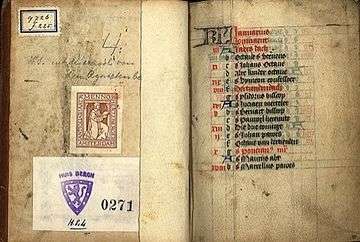
The rebellious Netherlands that had united in the Union of Utrecht (1579) declared their independence from Spain in 1581, during the Eighty Years' War; Spain finally accepted this in 1648. The Dutch revolt was partially religiously motivated: during the Reformation many of the Dutch had adopted Lutheran, Anabaptist, Calvinist or Mennonite forms of Protestantism. These religious movements were suppressed by the Spanish, who supported the Counter Reformation. After independence the Netherlands adopted Calvinism as a quasi state religion (although never formally), but practiced a degree of religious tolerance towards non-Calvinists. It became considerably safe for Jewish and Protestant refugees from Flanders, France (Huguenots), Germany and England (Pilgrims for instance). There have always been considerable differences between orthodox and liberal interpretations of Calvinism: between Arminianism and Gomarism in the 17th century; and between the Dutch Reformed Church (Nederlands Hervormde Kerk) and the Reformed Churches in the Netherlands (Gereformeerde Kerken in Nederland) in the late 19th century, which even led to a denominational difference between hervormd and gereformeerd, though linguistically both meaning "reformed". Catholics, who dominated the southern provinces, were not allowed to practice their religion openly. They were emancipated during the late 19th and early 20th century through pillarization, by forming their own social communities. In 1947, 44.3% belonged to Protestant denominations, 38.7% belonged to the Roman Catholic Church, and 17.1% were unaffiliated.[10] In 1940-45, 75-80% of Dutch Jews were murdered in The Holocaust by the Nazis.[11]
.jpg)
Since 1880 the major religions began to decline as secularism, socialism and liberalism grew; in the 1960s and 1970s Protestantism and Catholicism began to decline in a faster rate. There is one major exception: Islam which grew considerably as the result of immigration. Since 2000 there has been a raised awareness of religion, mainly due to Muslim extremism.[12] In 2013 a Catholic became Queen consort.
Christianity
Roman Catholicism
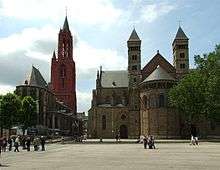
Currently, Roman Catholicism is the single largest religion of the Netherlands,[13] forming some 23.7%[1] of the Dutch people in 2015, down from 40% in the 1960s. According to the church itself, formal membership was 22.4% of the Dutch population in 2016.[14]
After 1970 the emphasis on Catholic concepts such as hell, the Devil, sin, divorce and remarriage, confession, the teaching of the catechism and receiving the eucharist rapidly disappeared, and these concepts are nowadays seldom or not at all found within contemporary Dutch Catholicism. In the 1980s and 1990s the church became polarized between conservatives, whose main organization was the Contact Roman Catholics, and liberals, whose main organization was the Eighth of May Movement, (Dutch: "Acht Mei-beweging") which was founded in 1985. The latter organization had a difficult relationship with the bishops and was disbanded in 2003. As of 2014 cardinal Willem Jacobus Eijk, the Archbishop of Utrecht, is the highest Catholic authority.
In December 2011 a report was published by Wim Deetman, a former Dutch minister, detailing widespread child abuse within the Catholic Church in the Netherlands. 1,800 instances of abuse "by clergy or volunteers within Dutch Catholic dioceses" were reported to have occurred since 1945.[15] According to the report, "The risk of experiencing unwanted sexual advances was twice as great for minors in institutions as the national average of 9.7%. This finding reveals no significant difference between Roman Catholic institutions and other institutions."[16] In March 2012, however, it was revealed that cases of 10 children being chemically castrated after reporting being sexually abused to the police had been left out.[15] It also emerged that in 1956 former prime minister Victor Marijnen, then chairman of a children's home in Gelderland, had covered up the sexual abuse of children. According to the De Telegraaf newspaper, he "intervened to have prison sentences dropped against several priests convicted of abusing children."[15] The factuality of these claims is unclear, though. The Commission rejected all the claims.[17]
The number of Catholics is not only declining, but many people who identify themselves as Roman Catholics also do not regularly attend Sunday Mass. 172,000 people, or 1.0% of the Dutch population, attend Mass on a given Sunday, according to information by the Catholic Institute for Ecclesiastical Statistics (KASKI) in their 2010 statistical update of the Dutch Catholic Church.[18] Most Catholics live in the southern provinces of North Brabant and Limburg, where they comprise a majority of the population in the diocese of Roermond in the province of Limburg, based on self reported information by the Catholic Church.
According to the church administration in 2010 the population of two dioceses' s-Hertogenbosch and Roermond had still a majority Roman Catholic. It is notable that SILA (Stichting Interkerkelijke Ledenadministratie) published precisely for these two dioceses a significantly lower number of Catholics in 2005. Based on the SILA-numbers, in the diocese of 's-Hertogenbosch in 2010 the population has no longer a Catholic majority, according to the church administration Catholics became a minority in the diocese of 's-Hertogenbosch since 2014.
The number of parishes in the Netherlands has dropped between 2003 and 2015 from 1525 to 726.[19]
Since the provinces North Brabant and Limburg are in the Netherlands historically mostly Roman Catholic, some of their people still use the name a basis for their cultural identity rather than as a religious identity. A planned visit of Pope Francis to the Netherlands was blocked by cardinal Wim Eijk in 2014, allegedly because of the feared lack of interest in the Pope among the Dutch public.[20] The vast majority of the Catholic population in the Netherlands is now largely irreligious in practice. Research among self-identified Catholics in the Netherlands, published in 2007, shows that only 27% of the Dutch Catholics can be regarded as a theist, 55% as an ietsist, deist or agnostic and 17% as atheist.[21] In 2015 only 13% of self-identified Dutch Catholics believe in the existence of heaven, 17% in a personal God and fewer than half believe that Jesus was the Son of God or sent by God.[4]
Notable Dutch Catholics include Pope Adrian VI, Ruud Lubbers, Henry of Gorkum, Cornelius Loos, Jakob Middendorp, Hadewijch, Hieronymus Bosch, Piet de Jong, Jan Harmenszoon Krul, Dries van Agt, Jan Steen, Casimir Ubaghs, Maxime Verhagen, and Joan Albert Ban.
Protestantism
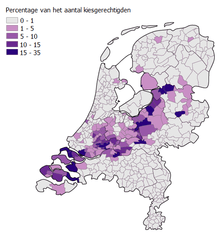
The Protestant Church of the Netherlands (PKN) forms by far the largest Protestant denomination, with some 15.5% of the population in 2015, based on a large scale survey,[1] down from 60% in the early 20th century. According to the church itself, formal membership was 9.1% ( 1.562 million members of a total population of 17,081,505) of the Dutch population in 2017.[22]
The PKN was formed in 2004 as a merger of the two major strands of Calvinism: the Dutch Reformed Church (which then represented roughly 8.5% of the population) and the Reformed Churches in the Netherlands (at that time 3.7% of the population) and a smaller Lutheran Church, the Evangelical Lutheran Church in the Kingdom of the Netherlands (0.1%). Since the 1970s these three churches had seen a major decline in adherents and had begun to work together. The PKN itself claims that 9.1% of the Dutch population is a member in 2016. About 4% of newborns were baptized within the PKN in 2014.[23] The Church embraces religious pluralism. Research shows that 42% of the members of the PKN are non-theist.[21] Furthermore, in the Protestant Church in the Netherlands (PKN) and several other smaller denominations of the Netherlands, 1 in 6 clergy are either agnostic or atheist.[24][25][26] The number of members falls on average by about 2.5% per year. This is caused primarily by the death of older members and little growth among the younger population.[27] A large number of Protestant churches, mostly orthodox Calvinist splits and liberal churches, stayed out of the PKN. They represented some 4% of the population in 2004. Calvinism is the traditional faith of the Dutch Royal Family – a remnant of the church's historical dominance.
The Bible Belt (De Bijbelgordel in Dutch) is the name given to a strip of land in the Netherlands, after the Bible Belt of the United States. The belt is inhabited by a large number of conservative Protestants. The Bible Belt stretches from Zeeland, through the West-Betuwe and Veluwe, to the northern parts of the province Overijssel. However, some communities with strong conservative Protestant leanings are situated outside the belt. For example, Urk, considered by many as one of the most traditional communities in the country, and some municipalities of Friesland have characteristics typical of the Bible Belt. Other places in this area are Yerseke, Tholen, Ouddorp, Opheusden, Kesteren, Barneveld, Nunspeet, Elspeet and Staphorst. The three biggest cities regarded to be part of the Bible Belt are Ede, Veenendaal and Kampen.
A 2015 study estimates some 4,500 Christian believers from a Muslim background in the country, most of them belonging to some form of Protestantism.[28]
Christian minorities
_Groningen_NL.jpg)
- Calvinism:
- Restored Reformed Church
- Continued Reformed Churches
- Christian Reformed Churches
- Netherlands Reformed Congregations
- Reformed Parishes in the Netherlands
- Continued Reformed Churches in the Netherlands
- Old Reformed Parishes in the Netherlands
- Free Old Reformed Parishes in the Netherlands
- Reformed Churches in the Netherlands (Liberated)
- Netherlands Reformed Churches
- New Reformed Churches
- Mennonite Church in the Netherlands
- Remonstrant Brotherhood
- Baptists:
- Union of Baptist Churches in the Netherlands
- Brotherhood of Baptist Churches
- Independent Free Baptist Churches
- Lutheranism:
- League of Free Evangelican Parishes
- Evangelican Brotherhood
- Restorationism:
- Pentecostalism:
- Apostolic Community
- United Pentecostal and Evangelical Churches
- Anglicanism: Church of England
- Dispensationalism: Gathering of Religious
- Methodism: Salvation Army
- Old Catholic: Old Catholic Church of the Netherlands
- Quakerism
- Zwinglianism: Zwingli Union
- Eastern Orthodox Church
Islam

Islam is a relatively new religion in the Netherlands, as per most recent (CBS) statistics 4.9% of the Dutch population were Muslims in 2015.[1]
The majority of Muslims in the Netherlands belong to Sunni denomination, with a sizeable Shia minority. Muslim numbers began to rise after the 1970s as the result of immigration. Some migrants from former Dutch colonies, such as Surinam and Indonesia, were sometimes Muslim, but migrant workers from Turkey and Morocco are the biggest part, as well as their children. During the 1990s, the Netherlands opened its borders for Muslim refugees from countries like Bosnia and Herzegovina, Somalia, Iraq, Iran and Afghanistan. Of the immigrant ethnic groups, 100% of Bosniaks; 99% of Moroccans; 90% of Turks; 69% of Asians; 64% of other Africans, and 12% of Surinamese were Muslims.[29] Muslims form a diverse group. Social tensions between native Dutch and migrant Muslims began to rise in the early 21st century, with the murder of politician Pim Fortuyn by militant animal rights activist Volkert van der Graaf and the murder of Theo van Gogh by extremist Muslim, Mohammed Bouyeri, part of the Hofstad Network.
Hinduism
Hinduism is a minority religion in the Netherlands, representing 0.6% of the Dutch population in 2015.[1] Most of these are relatively recent first or second generation Indo-Surinamese immigrants, South Asians who had been resident in the former Dutch colony of Suriname and travelled to the Netherlands in the 1970s and 1980s. There are also sizable populations of Hindu immigrants from India and Sri Lanka, as well as a smaller number of Western adherents of Hinduism-oriented new religious movements.
Buddhism

Buddhists represent 0.4% of the Dutch population in 2015.[1]
Sikhism
Judaism
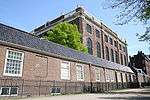
Religious Jews represent 0.1% of the Dutch population in 2015.[1] Because of its social tolerance, the Dutch Republic formed a haven for Jews that were persecuted because of their beliefs throughout Europe. Prominent Dutch Jews include Baruch Spinoza, a 17th-century philosopher, Aletta Jacobs, a 19th-century feminist, and Henri Polak, who founded both the socialist party SDAP and the labor union NVV. The majority of Jews lived in Amsterdam, where they formed an eighth (90,000) of the population. During the Second World War about 75% of Dutch Jews were deported and murdered in The Holocaust.[30]
The Jewish Communities in the Netherlands, the Dutch Union for Progressive Judaism, and the Portuguese Israelite Religious Community are three organizations of Jews in the country.
Bahaism
The first mentions of the Bahá'í Faith in the Netherlands were in Dutch newspapers which in 1852 covered some of the events relating to the Bábí movement which the Bahá'í Faith regards as a precursor religion.[31] Circa 1904 Algemeen Handelsblad, an Amsterdam newspaper, sent a correspondent to investigate the Bahá'ís in Persia.[32] The first Bahá'ís to settle in the Netherlands were a couple of families — the Tijssens and Greevens, both of whom left Germany for the Netherlands in 1937 as business practices were affected by Nazi policies.[33] Following World War II the Bahá'ís established a committee to oversee introducing the religion across Europe and so the permanent growth of the community in the Netherlands begins with Bahá'í pioneers arriving in 1946.[33] Following their arrival and conversions of some citizens the first Bahá'í Local Spiritual Assembly of Amsterdam was elected in 1948.[34] In 1957, with 110 Bahá'ís and nine spiritual assemblies, the Bahá'í community in the Netherlands first elected its own National Spiritual Assembly.[33] In 1997 there were about 1500 Bahá'ís in the Netherlands.[35] In 2005 the Netherlands had 34 local spiritual assemblies.[34]
Demographics
Religious affiliation by year (1830–2015)
Table
| Year | Most[lower-alpha 3] Protestants | Roman Catholics | Jews | Muslims | Other Christians
/religions |
No religion/atheist |
|---|---|---|---|---|---|---|
| 1830 | 59.1% | 40.8% | 1.8% | - | 0.1% | - |
| 1840 | 59.6% | 40.3% | 1.8% | - | 0.1% | - |
| 1849 | 59.7% | 38.4% | 1.9% | - | 0.1% | - |
| 1859 | 60.6% | 37.4% | 1.9% | - | 0.1% | - |
| 1869 | 61.3% | 36.6% | 1.9% | - | 0.1% | - |
| 1879 | 61.6% | 36.1% | 2.0% | 0.0% | 0.0% | 0.3% |
| 1889 | 60.5% | 35.6% | 2.2% | 0.0% | 0.4% | 1.5% |
| 1899 | 60.0% | 35.3% | 2.0% | - | 0.4% | 2.3% |
| 1909 | 57.3% | 35.2% | 1.8% | 0.0% | 0.7% | 5.0% |
| 1920 | 53.8% | 35.8% | 1.7% | - | 1.0% | 7.8% |
| 1930 | 46.3% | 36.5% | 1.4% | - | 1.4% | 14.4% |
| 1947 | 42.3% | 38.6% | 0.1% | - | 1.9% | 17.1% |
| 1960 | 40.7% | 40.5% | 0.1% | 0.0% | 0.2% | 18.3% |
| 1971 | 35.9% | 40.5% | 0.1% | 0.4% | 0.3% | 23.6% |
| 1975 | 33% | 38% | - | - | 3% | 26% |
| 1977 | 31% | 38% | - | - | 3% | 26% |
| 1980 | 30% | 38% | - | - | 5% | 26% |
| 1983 | 29% | 36% | - | - | 6% | 30% |
| 1985 | 28% | 37% | - | - | 5% | 31% |
| 1990 | 26% | 33% | - | - | 6% | 38% |
| 1995 | 21% | 33% | - | - | 8% | 40% |
| 2000 | 21% | 32% | - | - | 8% | 40% |
| 2005 | 21% | 30% | - | - | 9% | 41% |
| 2010 | 17.9% | 27.3% | 0.1% | 4.5% | 5.1% | 45.3% |
| 2011 | 16.8% | 26.5% | 0.1% | 4.7% | 5.1% | 46.8% |
| 2012 | 16.7% | 25.8% | 0.1% | 4.8% | 5.2% | 47.4% |
| 2013 | 16.1% | 26.3% | 0.1% | 4.8% | 5.9% | 46.9% |
| 2014 | 15.8% | 24.4% | 0.1% | 4.9% | 5.6% | 49.2% |
| 2015 | 15.5% | 23.7% | 0.1% | 4.9% | 5.6% | 50.1% |
Sources:
- 1830–1971 Censuses: www.volkstellingen.nl
- 1975–2005 Statistics Netherlands' historical data, 1849-2015
- 2010–2015: 2010–2015 Statistics Netherlands' new surveys
Other surveys
Beliefs in the Netherlands (2015), based on in-depth interviewing by Radboud University and Vrije Universiteit Amsterdam[8]
- According to an independent in-depth interviewing by Radboud University and Vrije Universiteit Amsterdam in 2006, 34% of the Dutch population identified as a Christian,[4] decreasing till in 2015 almost 25% of the population adhered to one of the Christian faiths (11.7% Roman Catholic, 8.6% Protestants, 4.2% other small Christian denominations), 5% were Muslims and 2% Hindus or Buddhists. Approximately 67.8% of the population in 2015 had no religious affiliation, up from 61% in 2006, 53% in 1996, 43% 1979 and 33% in 1966.[8][37] The Sociaal en Cultureel Planbureau (Social and Cultural Planning Agency, SCP) expects the number of non-affiliated Dutch to be at 72% in 2020.[38]
- KASKI (Katholiek Sociaal-Kerkelijk Insituut / Catholic Social-Ecclesiastical Institute[39]) found 23.3% of the population to be nominal Catholic in 2014,[40] and 10% to be members of the Protestant Church in the Netherlands, based on information provided by the Catholic and Protestant churches.[23] These numbers are significantly higher than the numbers of adherents found by Radboud University and Vrije Universiteit Amsterdam. This shows a big disconnection between membership and actual adherence. Especially the Catholic Church often claims that a quarter of the Dutch population is Catholic, pointing to the official stats, but when questioned, fewer than half that number associate themselves with the Roman faith. A lot of people still registered as members of a church are actually not religious (anymore), but for various reasons have not officially renounced their membership (yet) — a phenomenon known as "belonging without believing".[41] According to KASKI, the total number of members of Christian groups in the Netherlands has decreased from approximately 7,013,163 (43.22% of the overall population) in 2003 to 5,730,852 (34.15% of the overall population) in 2013.[40]
- According to Eurobarometer 2012, 44% of Netherlands' residents were Christians.[42] Catholics were the largest Christian group in Netherlands, accounting for 22% of Netherlands' citizens,[42] while Protestants made up 15%, and other Christians made up 7%. Irreligious people and agnostics accounted for 41%, atheists accounted for 8%, and Muslims for 1%.[42]
- A December 2014 survey by the VU University Amsterdam found that for the first time there were more atheists (25%) than theists (17%) in the Netherlands, the majority of the population being agnostic (31%) or ietsistic (27%).[43]
Tendencies

Secularization, decline of Christianity, and growth of religious minorities
Secularization, and the decline in religiosity, started around 1880 and first became broader and noticeable after 1960 in the Protestant rural areas of Friesland and Groningen. Then, it spread to Amsterdam, Rotterdam and the other large cities in the west. In the 1970s, finally the Catholic southern areas started to show religious declines. A countervailing trend is produced by a religious revival in the Protestant Bible Belt, and the growth of Muslims and Hindu communities resulting from immigration and high birth rates.[44][45]
After the Second World War the major religions began to decline, while a new religion, Islam, began to increase in numbers. During the 1960s and 1970s, pillarization began to weaken and the population became less religious. In 1971, 39% of the Dutch population were members of the Roman Catholic Church; by 2014, their share of the population had dropped to 23.3% (church-reported KASKI data), or to 23.7% (large sample survey by Statistics Netherlands in 2015). The proportion of adherents of Protestantism declined in the same period from 31% to 15.5%.[1] A significant percentage of the population adheres to other Protestant churches and the Old Catholic Church.[46] With only 49.9% of the Dutch currently (2015) adhering to a religion, the Netherlands is one of the least religious countries of Europe, after Czech Republic and Estonia. During the 1960s till 1980s, religion lost its influence on the Dutch politics and as a result in the 1980s and 1990s the Dutch policy on women's rights, abortion, euthanasia, homosexuality and prostitution became very liberal. As a result of the declining religious adherence, the two major strands of Calvinism, the Dutch Reformed Church and the Reformed Churches in the Netherlands, together with a small Lutheran group began to cooperate, first as the Samen op weg Kerken ("Together on the road churches") and since 2004 as the Protestant Church in the Netherlands, a united Protestant church.
During the same period, Islam increased from nearly 0% to 5%. The main Islamic immigrants came from Surinam and Indonesia, as a result of decolonization, Turkey and Morocco, as migrant workers, and Iraq, Iran, Bosnia and Afghanistan as refugees. In the early 21st century, religious tensions between native Dutch people and migrant Muslims was increasing. After the rise of politician Pim Fortuyn, who sought to defend the Dutch liberal culture against what he saw as a "backwards religion",[47] stricter immigration laws were enacted. Religious tensions increased after the murder of Pim Fortuyn in 2002 and Theo van Gogh was killed in 2004 by Mohammed Bouyeri, a conservative Muslim.
In December 2014 for the first time there are more atheists (25%) than theists (17%) in the Netherlands. The majority of the population being agnostic (31%) or spiritual but not religious (27%).
in 2015, 63% of Dutch people think that religion does more harm than good. This is according to a study on religion and spirituality conducted by research firm Ipsos on behalf of the Dutch daily newspaper Trouw.[43] Not all respondents agreed with the statement that religion does more harm to the same degree. Most respondents (26 percent) agreed "a little". 19% of respondents "agreed" with the statement and another 18% "agreed completely". Atheists (25% of Dutch people) see the most harm in religion. Of this group 88% agreed that the balance is unfavorable for religion. The study showed that the more faithful someone is, the less that person is convinced that religion produces little good. Of the faithful only 21% believe that religion has a more damaging than beneficial effect. A quarter of the population thinks that morality is threatened if no one believes in God, down from 40% in 2006. The number of people reporting that they never pray rose from 36% in 2006 to 53% in 2016.
Humanism
A research in 2003 shows that about 1.27 million people in the Netherlands express explicitly an affinity with secular humanism, which is about 9.4% of the total population.[48] Erasmus and Coornhert are important early representatives of humanism in the Netherlands in the 16th century. Erasmus translated many classical texts so that they were accessible to a wide audience. In this period, there was still no non-or anti-religion movement. However, there was a sense of free will, own strength and reason. Dirck Coornhert in the Netherlands was one of the first who advocated religious tolerance. He did not derive his morality from the Christian religion, but enunciated that people outside the Christian faith could be virtuous as well. A statement Coornhert made is: "He who is never in doubt, does never learn." In the 17th century, especially Spinoza and Hugo Grotius were important. Baruch Spinoza (17th century) dared to call the bible man-made. The jurist Hugo Grotius focused on the law relating to war, peace and law. Internationally, he is regarded as the founder of modern human rights. During the Age of Enlightenment (18th century), the importance of science and research increased sharply. Confidence in human understanding and logical reasoning was given shape in liberalism. The German philosopher Kant and the evolution theory of Darwin, among other scientific theories in the 19th century, had an exceptionally strong influence and were a major step in the development of humanism in the Netherlands. Ludwig Feuerbach called religion a creation of the human mind. The modern organized humanist movement began in the Netherlands in the mid-nineteenth century with the establishment of freethinkers association De Dageraad (Dawn). The members, including writer Multatuli and later Anton Constandse. Marx's socialism had a significant influence on the Dutch humanism of the 20th century. With the establishment of the humanistic associations Humanitas in 1945 and the Humanistisch Verbond in 1946, Dutch humanists organized themselves after the Second World War to fight the still highly compartmentalized society which was dominated by separate Christians movements in the Netherlands (pillarisation). When the Universal Declaration of Human Rights was adopted by the United Nations in 1948, the Dutch Humanist movements became involved with the establishment of the International Humanist and Ethical Union in 1952 (and since 1990 also the European Humanist Federation).[49]
Pluralism
Slightly more than half (52.8%) of the respondents to a research about humanism in 2003 affiliated with no religious or philosophical movement at all. In contrast 8% said to follow more than 1 movement. This form of pluralism occurs in all religious and philosophical Dutch movements, but is strongest among supporters of non-Western religions. 75% of Dutch Buddhists also affiliate with other religious or philosophical movements. Among followers of Hinduism in the Netherlands, this ratio is even higher, at 91%. On the other hand, followers of Western religions and humanism, as well as movements in the 'other' category were least likely to affiliate with more than one religious or philosophical movement. Within Western movements the people affiliating with humanism were most likely to also adhere to one or more other movements (47%). Most of these humanists adhere to Catholicism (27%), Protestantism (14%) or Buddhism (12%). Also 9% of Catholics, 6% of Protestants and 50% of the Buddhists counting themselves as humanists, as well as 25% of the Muslims, 55% of the Hindu, 19% of the Jews and 15% of the supporters of a movement other than these listed.[48]
Cults, sects, and new religious movements
Cults, sects, and new religious movements have the same legal rights as larger and more mainstream religious movements.[50] The Dutch government chose not to make special laws regarding cults, sects or new religious movements (generally all informally called "sekten" in Dutch). This decision was based on reports made after the 1978 Jonestown mass murder and suicide. Nor is there any officially assigned institute that provides information to the public about these movements and organizations.[51]
Since November 2012, there has been an official complaint website about cults, sects, new religious movements, spiritual courses, philosophy courses, and therapy groups. The website was initiated by the Ministry of Security and Justice.[52] The website can also refer people to psychological counsellors.[53][54] The immediate reason for this website was an undercover documentary by the commercial TV station SBS6 about the Miracle of Love movement.[52]
As of 2004, the Netherlands did not have an anti-cult movement of any significance.[55]
2000s
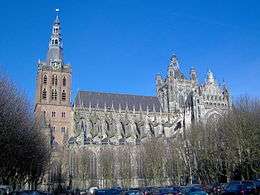
While 67.8% of the Dutch population are not members of any religious community, the other 32.2% are distributed over a diversity of religions. 24.5% of the Dutch population is affiliated with a Christian church. The largest group, 11.7% in 2015 is Roman Catholic. The rest is distributed over a multitude of Protestant churches making up the 12.8% of the population in 2012. The largest of which is the Protestant Church in the Netherlands (8.6%), which in fact is an alliance of three churches, two Calvinist and one Lutheran. Smaller churches make up about the 0.1% of the Dutch population. These churches have either been the result of conflicts within the Calvinist Church or been imported, mainly from the United States. Other Christians (Eastern Orthodox and Restorationists) make up only a small percentage. The remaining 7.7% of the population are members of another religion, such as Islam (5.8%), Hinduism, Judaism, Baha'i, Buddhism or indigenous religions.
Different sources give very different percentages.[56] in 2006, fewer than 7% attend church or mosque regularly (at least once a month). Similar studies were done in 1966, 1979 and 1996, showing a steady decline of religious affiliation. That this trend is likely to continue is illustrated by the fact that in the age group under 35, 69% are non-affiliated. However, those who are religious tend to be more profoundly religious than in the past. Religious belief is also regarded as a very personal affair, as is illustrated by the fact that 60% of self-described believers are not affiliated with any organised religion. There is a stronger stress on positive sides of belief, with Hell and the concept of damnation being pushed into the background. 53% of the Dutch population believe in a form of life after death, of which a third believes in some kind of heaven (with or without a god), but only 4% believe in a Hell. Of the entire population 10% believes in a reunion of family and loved ones, and 10% in survival of the spirit, soul or consciousness. Of the people who answer positive on the question whether they believe there is life after death, 15% think of the afterlife as "living on in the memory of others". Further believe 6 percent in reincarnation and 5% in a later return to earth as only in a human form.[57] One quarter of non-believers sometimes pray, but more in a sense of meditative self-reflection.[56] Also atheism, agnosticism and Christian atheism are on the rise; and are being broadly accepted.[7] The expected rise of spirituality (ietsism) has come to a halt according to research in 2015. In 2006 40% of respondents considered themselves spiritual, in 2015 this has dropped to 31%. The number who believed in the existence of a higher power (theists and certain ietsists) fell from 36% to 28% over the same period.[4]
A research done in 2015 by Ton Bernts and Joantine Berghuijs has concluded that 67.8% of the Dutch population considers themselves to be irreligious.[8][58] In 2006, 34% of the Dutch population was still a church member. In 2015 only 25% of the population adheres to one of the Christian churches, 5% is Muslim and 2% adheres to Hinduism or Buddhism, based on indepth interviewing.[4] In 2015, a vast majority of the inhabitants of the Netherlands (82%) says to never or almost never visit a church, and 59% stated that to never have been to a church of any kind. Of all the people questioned, 25% see themselves as atheist, an increase of 11% compared to the previous study done in 2006.[59]
Member loss of Christian groups 2003-2013 according to church reports
Almost all Christian groups show a decrease in the number of members or less stable membership. However, in particular the loss of members of the two major churches is noticeable, namely the Roman Catholic Church in the Netherlands, with a membership loss of approximately 589,500 members between 2003 (4,532,000 people, or 27.9% of the population) and 2013 (3,943,000 people, or 23.3%),[60] and the Protestant Church in the Netherlands, with a membership loss of 737,174 members between 2003 (1,823,085 people, or 11.2% of the population, for the Dutch Reformed Church; 623,100 people or 3.8% for the Reformed Churches in the Netherlands; and 11,989 people or 0.07% for the Evangelical Lutheran Church in the Kingdom of the Netherlands; total for these churches of 2,458,174 people, or 15.15% of the population) and 2012 (Protestant Church in the Netherlands, 1,721,000 people or 10.2% of the population). Smaller churches (Mennonite Church in the Netherlands, Remonstrants, and the Old Catholic Church) had a total number of 22,489 members (0.13% of the population) in 2003, which dropped to 17,852 members (0.10% of the population) in 2012.[23] In total, the number of members of Christian groups in the Netherlands decreased from 7,013,163 (43.22% of the population) in 2003 to 5,730,852 (34.15% of the population) in 2013. This accounts for a total member loss of 1,282,311 (9.7% overall population) of all churches in the Netherlands within these 10 years.[39] These numbers are based on information by KASKI (Katholiek Sociaal-Kerkelijk Insituut / Catholic Social-Ecclesiastical Institute[39]), which in turn bases its numbers on information provided by the churches themselves. Independent research in 2015 by the VU University Amsterdam and Radboud University shows significantly lower numbers concerning the percentage of the Dutch population that adheres to almost all the churches named here.
Educational institutes
See also
- Irreligion in the Netherlands
- Religion by country
- Ietsism
Notes
- In 2004, the Dutch Reformed Church (NHK) and the Reformed Churches in the Netherlands (GKN) merged to form the Protestant Church in the Netherlands (PKN) and officially no longer exist. However, many people tend to give their older affiliation even after the merger. People who declared themselves simply as belonging to the Protestant Church in the Netherlands did not give an information about belonging to an older affiliation.[3]
- Including members of other religions other than Islam, Hinduism, Buddhism and Judaism
- Provided statistics show Protestants by their allegiance to congregations of two denominations that do not exist anymore. In 2004, the Dutch Reformed Church (NHK), the Reformed Churches in the Netherlands (GKN) and the Evangelical Lutheran Church in the Kingdom of the Netherlands merged to form the Protestant Church in the Netherlands (PKN) and officially no longer exist. However, many people still tend to give their older affiliation even after the merger. People who declared themselves simply as belonging to the Protestant Church in the Netherlands did not give an information about belonging to an older affiliation. Lutherans happened to do so. People who identified with one of those three categories (NHK/GKN/or simply PKN) are all members of the Protestant Church in the Netherlands.[36]
References
- Schmeets, Hans (2016). De religieuze kaart van Nederland, 2010–2015 (PDF). Centraal Bureau voor der Statistiek. p. 5.
- CBS. "Helft Nederlanders is kerkelijk of religieus". www.cbs.nl (in Dutch). Retrieved 2017-10-17.
- Schmeets, Hans; Mensvoort, Carly van (2011). Religieuze betrokkenheid van bevolkingsgroepen, 2010–2014 (PDF). Centraal Bureau voor der Statistiek.
- "Hoe God (bijna) verdween uit Nederland". NOS. 13 March 2016. Retrieved 3 April 2016.
- Donk, W.B.H.J. van de; Jonkers, A.P.; Kronjee, G.J.; Plum, R.J.J.M. (2006)
- "Feestdagen Nederland". Beleven.org. Retrieved 27 January 2010.
- H. Knippenberg, "The Changing Religious Landscape of Europe", Het Spinhuis, Amsterdam 2005 ISBN 90-5589-248-3
- Bernts, Tom; Berghuijs, Joantine (2016). God in Nederland 1966-2015. Ten Have. ISBN 9789025905248.
- https://www.scientias.nl/niet-religieuze-nederlander-is-nu-officieel-in-de-meerderheid/
- "Volkstellingen 1795–1971". Volkstellingen.nl. Retrieved 23 April 2011.
- Walter Laqueur, ed. (2001). The Holocaust Encyclopedia. Yale University Press. p. 304. ISBN 978-0300138115.CS1 maint: extra text: authors list (link)
- Knippenberg, Hans "The Changing Religious Landscape of Europe" edited by Knippenberg published by Het Spinhuis, Amsterdam 2005 ISBN 90-5589-248-3, pages 102-104
- Heneghan, By Tom. "Dutch bishops give Pope Francis a bleak picture of Catholic Church in decline".
- Kerncijfers Rooms-Katholieke Kerk 2016 door drs. Joris Kregting en Jolanda Massaar-Remmerswaal, august2017
- "Dutch Roman Catholic Church 'castrated at least 10 boys'". Telegraph. Retrieved March 19, 2012.
- "Voormalig onderzoek RK - Archief website" (PDF). www.onderzoekrk.nl.
- "Voormalig onderzoek RK - Archief website" (PDF). www.onderzoekrk.nl.
- "Katholieken". KASKI. Retrieved 21 April 2015.
- "Kerkgebouwen en parochies". KASKI. Retrieved 21 April 2015.
- "Kardinaal Eijk blokkeert bezoek paus Franciscus". Trouw.
- God in Nederland' (1996-2006), by Ronald Meester, G. Dekker, ISBN 9789025957407
- PKN Statistische Jaarbrief 2017 Table 2 page 16
- "Cijfers overige kerkgenootschappen". KASKI. Radboud Universiteit.
- Pigott, Robert (5 August 2011). "Dutch rethink Christianity for a doubtful world". BBC News. Retrieved 2 October 2011.
- 1 in 6 Clergy in Dutch Church Atheist or Agnostic (Television interview). BBC. 7 August 2011.
- Dutch Church Retains Atheist Pastor. 24 February 2010.
- Bron: Statistische Jaarbrief 2011
- Johnstone, Patrick; Miller, Duane (2015). "Believers in Christ from a Muslim Background: A Global Census". IJRR. 11: 14. Retrieved 20 November 2015.
- Becker, Jos; De Hart, Joep (2006). "Godsdienstige veranderingen in Nederland" (PDF). Den Haag: Sociaal en Cultureel Planbureau. Archived from the original (PDF) on 25 January 2007.
- JCH Blom (July 1989). "The Persecution of the Jews in the Netherlands: A Comparative Western European Perspective" (PDF). European History Quarterly. 19 (3): 333–351. doi:10.1177/026569148901900302.
- de Vries 2002, pp. 18–20
- de Vries 2002, pp. 65–69
- C. van den Hoonaard, Will (1993-11-08). "Netherlands". draft of A Short Encyclopedia of the Baha'i Faith. Baha'i Library Online. Retrieved 2008-12-25.
- C. Vieten, Gunter (2006). "THE DUTCH BAHA'I COMMUNITY". Archived from the original on 6 January 2009. Retrieved 2008-12-25.CS1 maint: ref=harv (link)
- Hoekstra 2000, pp. 61
- Schmeets, Hans; Mensvoort, Carly van (2011). Religieuze betrokkenheid van bevolkingsgroepen, 2010–2014 (PDF). Centraal Bureau voor der Statistiek. Retrieved 21 February 2018.
- "Two-thirds of people in Netherlands have no religious faith". DutchNews.nl. 2016-03-14. Retrieved 2017-07-30.
- Sociaal en Cultureel Planbureau, God in Nederland (2006/2007)
- "Kaski: Onderzoekscentrum religie en samenleving". KASKI. Radboud Universiteit.
- "Overzicht onderzoeksvormen". KASKI. Radboud Universiteit.
- "Netherlands: 50% officially not religious - European Skeptics".
- "Discrimination in the EU in 2012" (PDF), Special Eurobarometer, 383, European Union: European Commission, p. 233, 2012, retrieved 14 August 2013 The question asked was "Do you consider yourself to be...?" With a form showing: Catholic, Orthodox, Protestant, Other Christian, Jewish, Muslim, Sikh, Buddhist, Hindu, Atheist, and Non-believer/Agnostic. Space was given for Other (SPONTANEOUS) and DK. Jewish, Sikh, Buddhist, Hindu did not reach the 1% threshold.
- van Beek, Marije (16 January 2015). "Ongelovigen halen de gelovigen in". Dossier Relige. der Verdieping Trouw. Retrieved 21 April 2015.
- Hans Knippenberg, "Secularization in the Netherlands in its historical and geographical dimensions," GeoJournal (1998) 45#3 pp 209-220. online
- Tomáš Sobotka and Feray Adigüzel, "Religiosity and spatial demographic differences in the Netherlands" (2002) online Archived 2012-11-15 at the Wayback Machine
- "Kerncijfers 2012". KASKI. Radboud Universiteit.
- (in Dutch) Fortuyn: grens dicht voor islamiet, Volkskrant, 2002-02-09
- Lammerts, Rob; Hakvoort, Susan (2004). Humanisme in beeld (PDF).
- "Geschiedenis". Humanistisch Verbond.
- Singelenberg, Richard Foredoomed to Failure: the Anti-Cult Movement in the Netherlands in Regulating religion: case studies from around the globe, redacted by James T. Richardson, Springer, 2004, ISBN 0-306-47887-0, ISBN 978-0-306-47887-1, pages 214-215
- "Prof. Fokko Oldenhuis: 'The government should set up an advisory centre to tackle sects' < University of Groningen". Rug.nl. 2011-02-27. Retrieved 2013-09-07.
- "Hoeveel sekteleiders lopen hier rond? Ministerie wist het niet meer - Religie - TROUW". Trouw.nl. Retrieved 2013-09-07.
- "pers | Sektesignaal". Sektesignaal.nl. 2012-11-30. Retrieved 2013-09-07.
- "Steunpunt slachtoffers misstanden bij sektes gelanceerd | Nieuwsbericht". Rijksoverheid.nl. 2012-11-30. Retrieved 2013-09-07.
- Singelenberg, Richard Foredoomed to Failure: the Anti-Cult Movement in the Netherlands in Regulating religion: case studies from around the globe, redacted by James T. Richardson, Springer, 2004, ISBN 0-306-47887-0, ISBN 978-0-306-47887-1, page 213
- Knippenberg, Hans "The Changing Religious Landscape of Europe" edited by Knippenberg published by Het Spinhuis, Amsterdam 2005 ISBN 90-5589-248-3, page 92
- "Het hiernamaals is vooral een walhalla zonder God". Trouw.
- "Tabellen-God-in-Nederland-2016.docx".
- "Archived copy". Archived from the original on 2016-03-14. Retrieved 2016-03-13.CS1 maint: archived copy as title (link)
- "Cijfers Rooms-Katholieke Kerk". KASKI. Radboud Universiteit.
Bibliography
- de Vries, Jelle (2002). The Babi Question You Mentioned--: The Origins of the Baha'i Community of the Netherlands, 1844-1962. Peeters Publishers. ISBN 978-90-429-1109-3.CS1 maint: ref=harv (link)
- Hoekstra, E.G.; Ypenburg, M.H. (2000). Wegwijs in religieus en levensbeschouwelijk Nederland. Kampen: Uitgeverij Kok. ISBN 978-90-435-0028-9.CS1 maint: ref=harv (link)
